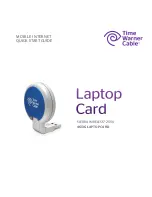
Glossary
272
byte
— A sequence of eight bits. A byte is the smallest addressable unit
of data. See also
bit, gigabyte, kilobyte
,
megabyte
.
C
cache
— A section of very fast memory in which frequently used
information is duplicated for quick access. Accessing data from
cache is faster than accessing it from the computer’s main memory.
See also
CPU cache, L1 cache, L2 cache.
CD
— An individual compact disc. See also
CD-ROM.
CD-ROM (compact disc read-only memory)
— A form of high-
capacity storage that uses laser optics instead of magnetic means for
reading data. See also
CD
. Compare
DVD-ROM.
central processing unit (CPU)
— The chip that functions as the “brain”
of the computer. It takes information from outside sources, such as
memory or keyboard input, processes the information, and sends the
results to another device that uses the information.
character
— Any letter, number, or symbol you can use on the
computer. Some characters are non-printing characters, such as a
paragraph break in a word-processing program. A character
occupies one byte of computer storage.
chip
— A small piece of silicon containing computer logic and circuits
for processing, memory, input/output, and/or control functions.
Chips are mounted on printed circuit boards.
click
— To press and release the AccuPoint control button or mouse
button without moving the AccuPoint or mouse. In Windows
®
, this
refers to the left mouse button or primary AccuPoint control button,
unless otherwise stated. See also
double-click
.
color palette
— A set of specified colors that establishes the colors that
can be displayed on the screen at a particular time.
compatibility
— The extent to which computers, programs, or devices
can work together harmoniously, using the same commands,
formats, or language as another.
configuration
— (1) The collection of components that make up a single
computer system. (2) How parts of the system are set up (that is,
configured).
Summary of Contents for 6100
Page 295: ...Index 295 ...
















































